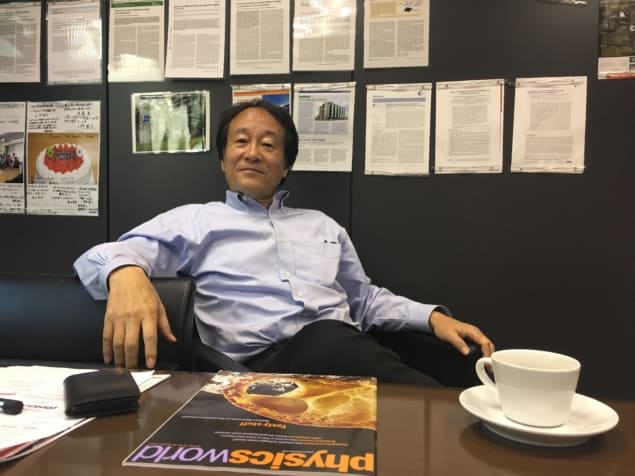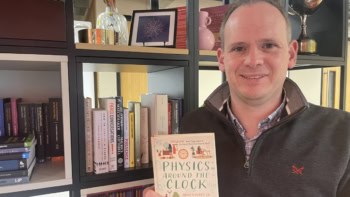
By Matin Durrani in Osaka, Japan
By most measures, Japan is one of the wealthiest nations in the world. Depending on which criterion you use, it’s either the third or fourth biggest economy on the planet. Much of that success is built on the country’s prowess in science and technology, which have supported numerous hi-tech giants of the corporate world.
Still, not everything is rosy in the Japanese garden. After the post-war boom years, the economy began to slump in the early 1990s and has picked up only slowly since then. To make matters worse, Japan has also had to contend with rising social-security costs to support an ageing population. Plummeting birth rates and steadily rising death ages mean that Japan’s population has fallen by just over 1% since 2010 to 126 million.
I was thinking about such matters yesterday as I walked through a shopping mall in central Osaka on my way to meet applied physicist Satoshi Kawata from the University of Osaka. Okay, it was a weekday lunchtime and this is just one data point, but there sure were lots of pensioners out shopping. I was also surprised to see a guy selling The Big Issue – the magazine that supports homeless people who want to make a living. I’d not seen any inkling of poverty in the country up to that point.
The ageing population means that most learned societies in Japan are shrinking in numbers simply because there are fewer young people around. However, sitting in his office on the third floor of the Photonics Center, Kawata was pleased to say that membership of the Japan Society of Applied Physics (JSAP), which he served as president from 2014 to 2016, remains relatively constant.
“It’s good given that the number of 18-year-olds as a fraction of the total population has halved in the last 30 years,” says Kawata, who is 65 but still massively active in his new position as an emeritus professor at Osaka. Indeed, he claims that the proportion of young researchers in the JSAP membership is going up.
Having a vibrant applied-physics community – JSAP has more than 23,000 members – seems vital if Japan wants to continue to innovate. It also needs more people like Kawata, who is fizzing with ideas and willing to challenge orthodox thinking. And just because he’s “officially” retired, doesn’t mean older researchers like him have got nothing to offer any more.



